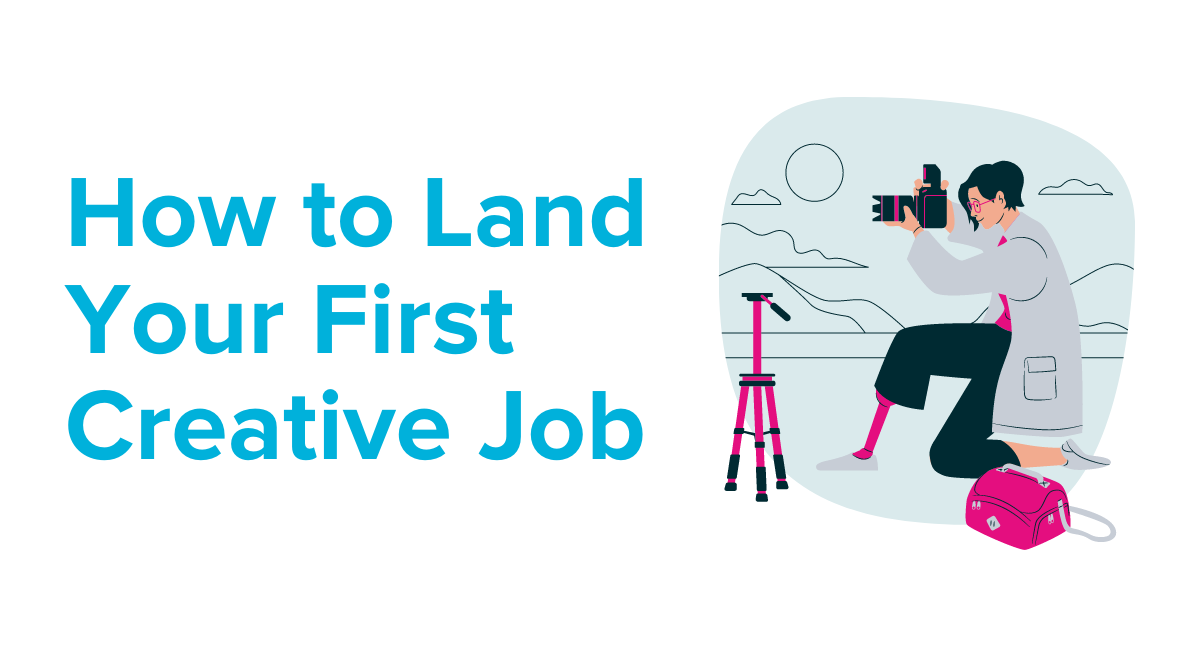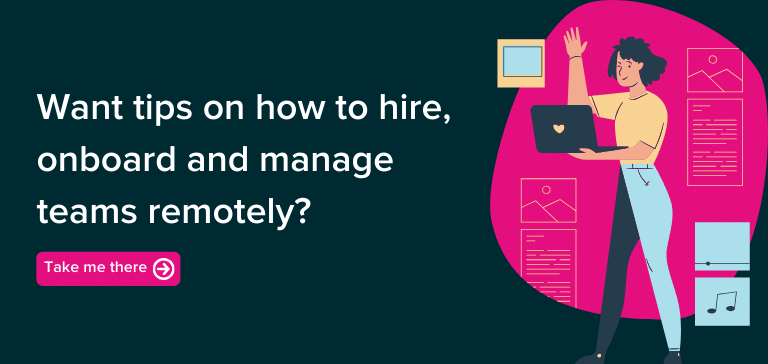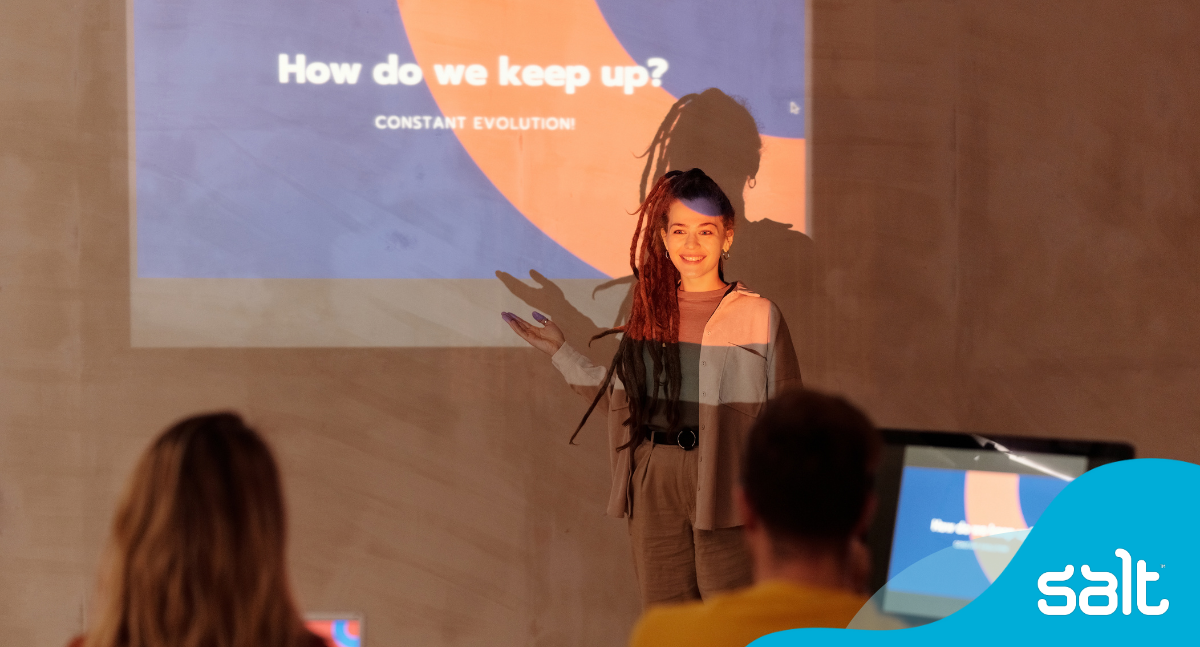
With the creative and design industry being very competitive sectors, it’s important that when applying for jobs you make sure that you present yourself in a way that makes you stand out. Many graduates and students are now looking for their first creative job or an internship to help them at the start of their career.
We’ve compiled the key insights and tips following our ‘How to Land Your First Creative Job’ workshop with Goldsmiths University to help students and graduates with their job hunt.
Around this time last year, our Principal Consultant Jack Barber hosted a workshop at Goldsmiths University to speak to junior design students about their portfolios and how to improve them. This year due to the restrictions, Jack led a virtual workshop with creative students alongside Malaika Francique, Design Intern at Apple and Wendy Mubaiwa, Chief Operating Officer at Gradprentice. The trio shared their experiences, advice and tips on how to approach the job market and prepare yourself to make sure that you land that job or internship.
How to prepare for your job search
1. Research is key
One of the main themes was making sure that you are organised and prepared. Wendy explained that researching what type of creative designer you want to be and what your ideal career journey will look like is important so you can then set an action plan. She recommends spending at least 10 hours researching so that you can identify what skills you have and what skills you need so you’re able to tailor your applications.
2. Perfect your personal and professional brand
As a designer, you must be pitching yourself in a way that clearly communicates your skills, style and the career direction that you want to go in. Your personal brand or your self-brand are very important when trying to identify what your strengths and areas for improvement are. Visualise what career you want and bring that visualisation to life by panning out the skills and experience needed to get there. Make sure that your personal branding is aligned – including your CV, portfolio, LinkedIn, Behance or website.
3. Build an action plan which links with your Personal Development Plan and portfolio
Building out an action plan which is in line with your PDP (Personal Development Plan) can help make sure that you are telling a consistent story about what type of creative you are and want to be. Make sure that your PDP also links in with your portfolio so that you can use relevant examples to show your experience in the skills or industry that you are applying for. There are lots of PDPs available on Google if you haven’t completed one before.
4. Create a centralised application tracker
There are many ways that you can create a centralised application tracker, but it is important that you choose the option that works for you. This tracker will allow you to keep track of the jobs that you have applied for, details of the role, contact details for the recruiter, manager or hiring manager listed, and also include dates of when you applied and followed up. This makes it easy for you to keep on top of your applications, all in one place. Some examples that you can use include Excel, Airtable, Trello and Notion.
5. Set up job alerts (including for internships)
Job boards allow you to set up job alerts which are specific for the roles that you are searching for. Job boards like Indeed also allow you to filter for internships instead of full or part-time jobs, by using the ‘Job type’ option. Your university will also be able to help you with career advice and guidance if you are looking for help with applications. Some universities also offer job-hunting support up to 3 years post graduating, so make sure that you tap into this network and resources.
Advice for your CV, cover letter and application
1. Try not to overthink your CV design
Some designers overcomplicate their CVs by using their design skills on their CV. However, Jack explains that it is important to not overwhelm yourself or overcomplicate your CV but instead focus on making sure that you customise it based on the job you are applying for; focusing on the skills, your experience, interests and key information. If you do want to design a visual CV, you can use apps like Canva to easily do this. Canva includes a lot of CV templates which are pre-set to choose from.
2. Make sure that you customize your application
When applying for roles it can be easy to send out generic applications. However, tailoring your application – your CV and cover letter and if possible, your examples of work and portfolio, will really make you stand out when applying for jobs.
3. Don’t downplay what you are doing or what you did at university
If you do not have much experience yet, make sure that you don’t downplay what you did at university, such as extra-curriculum activities, projects, and groups that you were involved in. Employers want to understand who you are and your values and interests. If you have examples of projects you have worked on, make sure that you include these in your application and also in your interview.
During the interview or assessment process
1. Prepare yourself for the interview
As mentioned, preparation and research are key. Make sure that you have researched the company you are applying for to show that you’re passionate about the role. Plus, you could also mention any insights in your interview such as suggestions for improvements or communicate their values and goals back to them and how they align with your own.
2. Show enthusiasm and personality
The worst thing when interviewing a candidate is when they are not showing any enthusiasm about the business or the role that they are applying for. If you are generally excited and interested in the opportunity, don’t downplay it – make sure that you show and communicate this. It will do you a world of good.
3. If you want to go outside of the box on the task, make sure that you ask
When trying to decide what direction to go with when approaching a design task and if you want to go outside of the box with your idea, make sure you check with the hiring manager first. It is important that you completely understand the brief and if there is something that you are unsure about, ask. This way not only are you setting expectations but you are also gathering information into what they expect to see.



